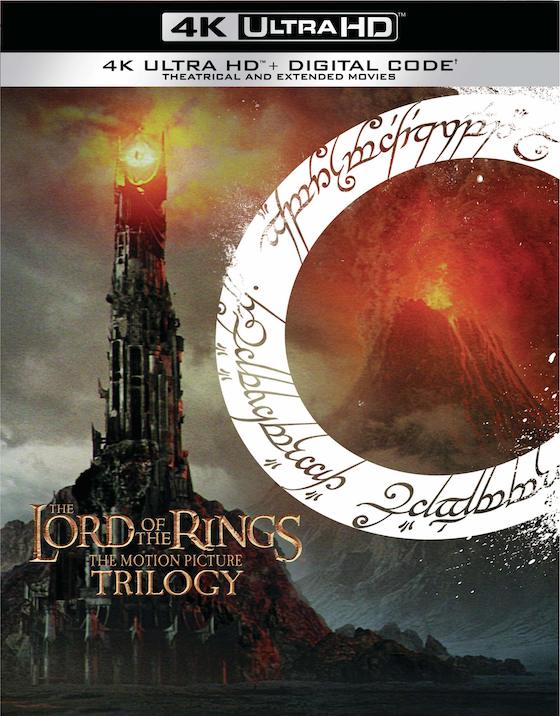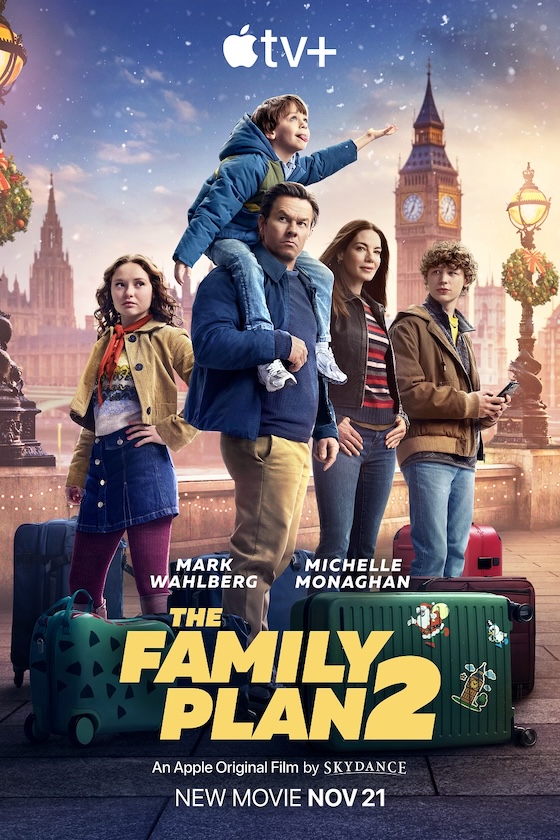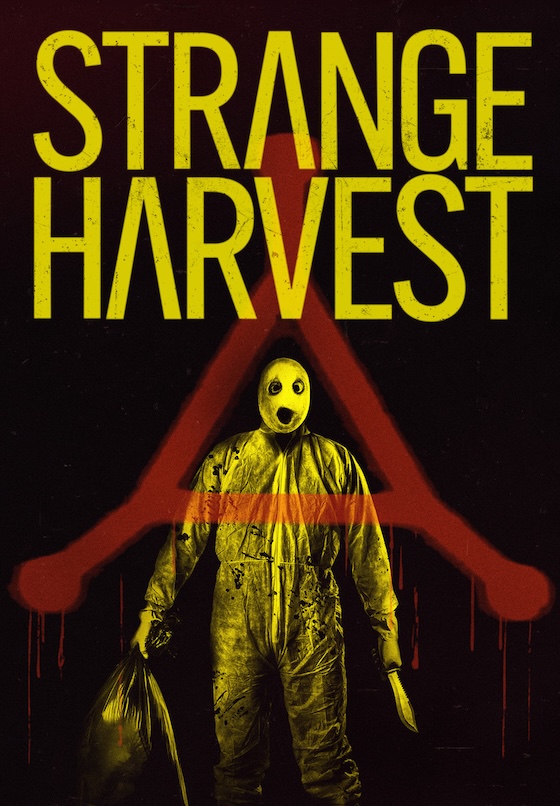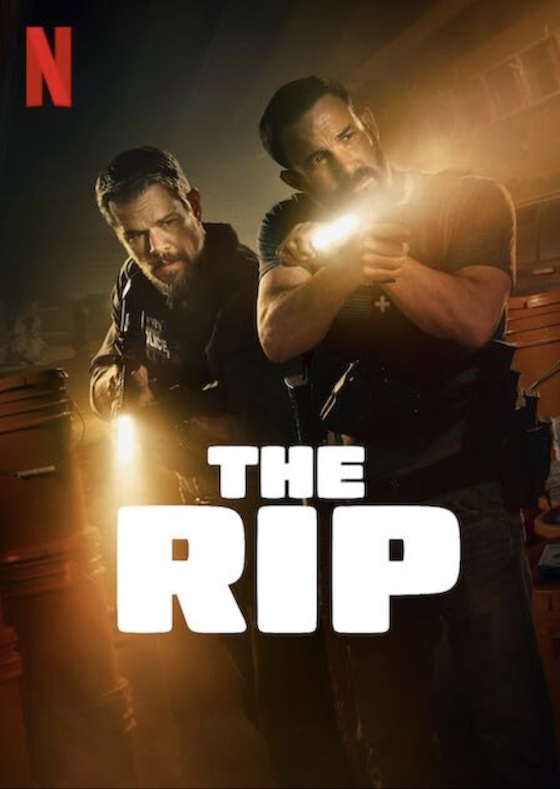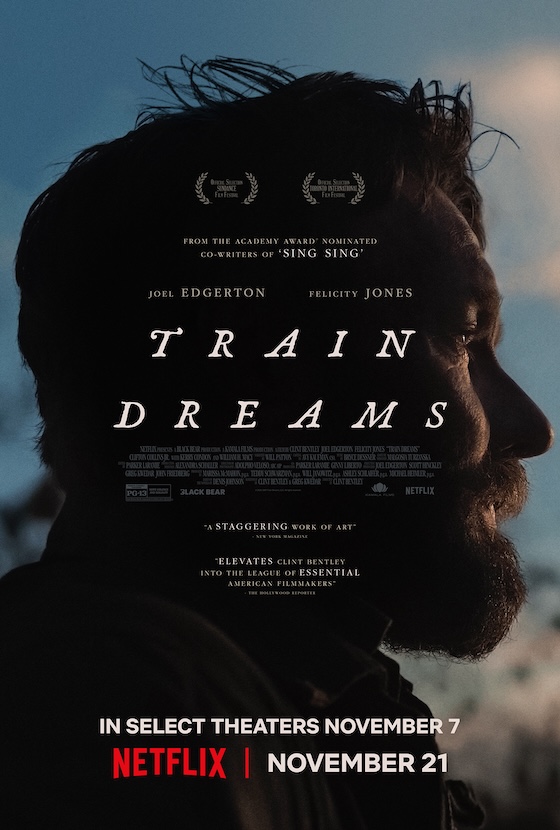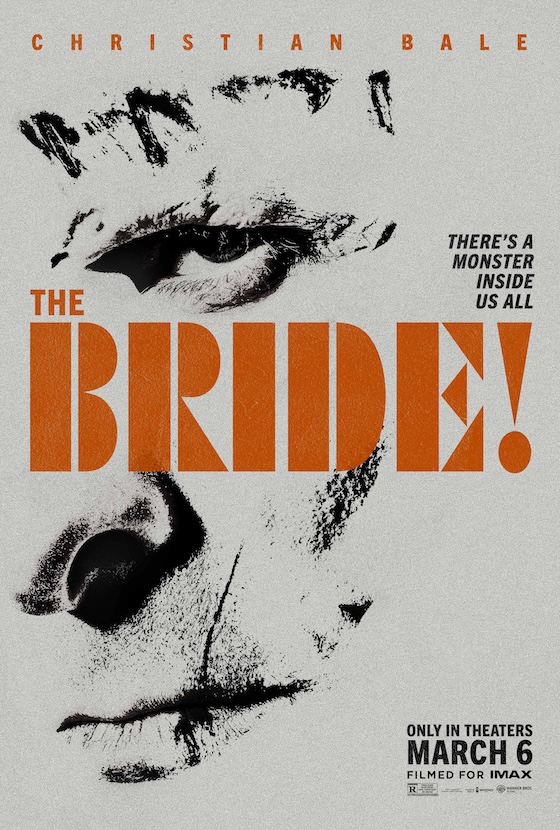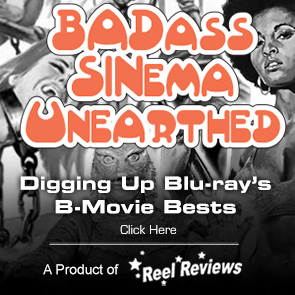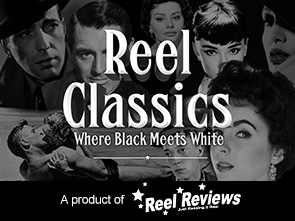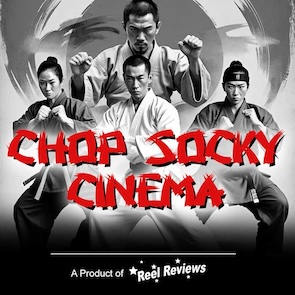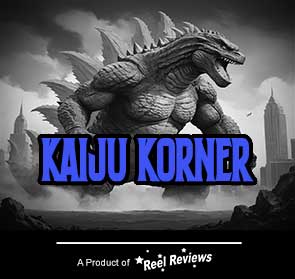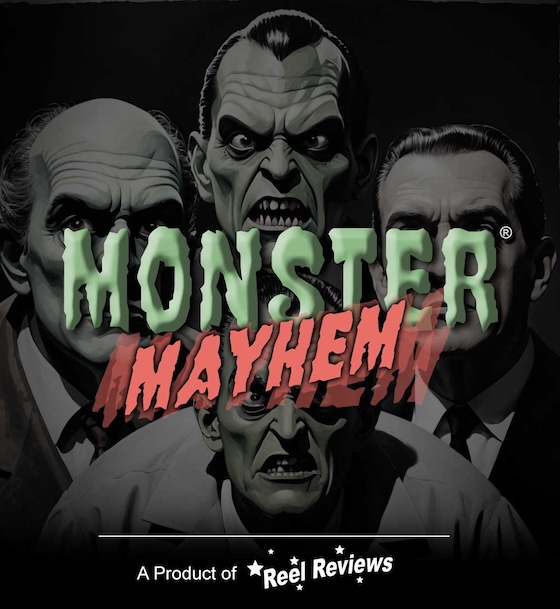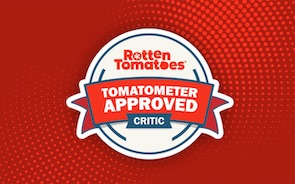In annuls of home media, there are few titles regarded as legendary as The Lord of the Rings trilogy. Not only because of Peter Jackson’s epic adaptation, but in the sheer depth of content and effort made in exploring every facet of the creation of these films. From expansive documentaries covering the history of author Tolkien, the lives of the hundreds of people involved in bringing his world to the screen, the production design, shooting, casting, food they ate, places they filmed… no stone was left unturned. It literally would take you days of constant watching to get through it all. But, amazingly, that wasn’t the biggest draw. Once all three films had released theatrically, Jackson and his crew set to work on giving us the real draw of these massive 4 disc DVD (and later blu-ray) sets: Extended Editions of all three films! And these were not your bog standard extra 10-15 minutes of shit that instantly registered as unnecessary, oh no. These LENGTHY new cuts of the three movies richly and deftly expanded on Tolkien’s doorstopper of a work. They are definitive works, far more layered than the theatrical cuts (which were also extraordinary). After sitting through these versions back in the day (especially on blu-ray!) I pondered what possibly would make me ever want or need to see another rerelease.
The answer of course is a 4K restoration.
Now, before I delve into the three films, let me preface this review with a caveat. THIS set contains ONLY the theatrical and extended cuts. There are NONE, and I do mean ZERO, of the 6 prior blu-ray discs of extra materials or documentaries. There are no commentaries. This is the bare bones version that will be followed sometime in 2021 with a mortgage required, fancy assed, extras choked (with ‘amazingly NEW EXTRAS’) collector’s edition that will contain both LOTR and The Hobbit trilogies, along with all their previously released goodies. (I wish you could see me slapping my own forehead as I wrote that. What an ungrateful reviewer! I got this free!)
I say this, because I won’t be including an extras section in these reviews (for obvious reasons), and I want those of you considering purchasing this to be aware of the oh so common double dip marketing on its way soon. But having said that, the point of this is to find out what a 4K restoration of these near 20 year-old films is like.
Let’s get started on both the theatrical and extended versions.
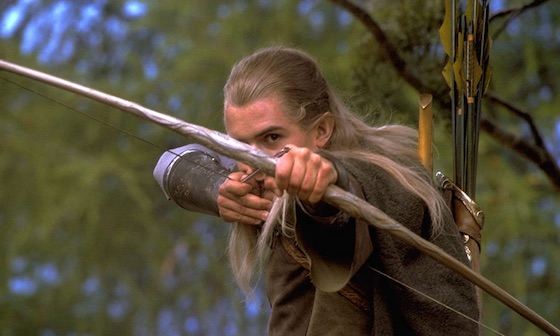
The Lord of the Rings – FELLOWSHIP OF THE RING (theatrical)
Very briefly, Peter Jackson had set up a two film adaptation with Harvey Weinstein (yes, that one) that almost came to fruition. But when all seemed lost for the New Zealand filmmaker, New Line Cinema came in at the last minute, after the Weinstein thing fell through, and agreed to make a trilogy…
Three films would adapt the three subtitled novels.
The wizard Gandalf (Ian McKellen) has arrived in Hobbiton for his friend Bilbo’s (Ian Holm) 111th birthday. While there for a celebration, Gandalf notices a difference in Bilbo’s personality and disposition, which he quickly attributes to a ring the hobbit unfortunately came into possession of many years before. The ring, Gandalf suspects, is a dark conduit of the fallen lord of Mordor, Sauron, and not only poses a mortal threat to Bilbo, but to Middle-earth itself. Amazingly, Bilbo manages to leave it at home with his nephew Frodo (Elija Wood) while Gandalf swiftly goes off to research the ring’s implications. When Gandalf confirms his suspicions, he races back to Hobbiton and informs Frodo he must get the ring out of Hobbiton before it is too late. Sauron’s forces are massing and are coming for the ring. Through the ring, Suaron can return and plunge Middle-earth back into darkness. Frodo, with the help of the Fellowship: Gandalf, three fellow hobbits (Sean Astin, Dominic Monahan and Billy Boyd), a mysterious ranger named Aragorn (Viggo Mortenson), an elf (Orlando Bloom), a Dwarf (John Rys-Davies) and a Gondorian (Sean Bean), begin a quest to the fires of Mount Doom (in Mordor) to destroy the ring, and Sauron, for all time. Sauron sends everything he has to stop them… and at great cost.
So quickly: the story goes Tolkien wrote The Hobbit, a simple, straight-forward novel, aimed at and loved by children; so loved that Allen and Unwin asked for sequel. MANY moons later, Tolkien handed in his massive magnum opus that is now one of the biggest selling novels in the history. The publisher couldn’t publish it as Tolkien intended and split the novel, much to Tolkien chagrin, into three parts.
Jackson, Walsh and Boyen’s adaptation of the first book is, like all three films, liberal in its deviations from the source, but effectively truncates the bulk of the first third. It’s not Tolkien’s pacing (of which the author himself stated was ‘unfilmable’) and is a much tighter and immediate narrative for it. Tolkien purists will decry this last comment, such is the reverence for Professor Tolkien’s work, but this, in my opinion, gave the world a new (and admittedly easier) accessibility to his gob-smacking imagination, where the novels couldn’t.
There is, for a movie, a lengthy set up (even lengthier in the extended edition), but once the Hobbits are on the road, so to speak, its momentum kicks in rather quickly and enraptures you into their plight. Jackson’s reinvention of a certain major scene (Hilltop) adds a more looming threat and urgency and is cinematic gold. So, too, is brevity brought to the Mines of Moria, plunging our heroes in the shit rather expediently.
There is an effective and affecting use of the hobbits being the bad guys’ targets. They are simple, sheltered folk, who—but for the efforts of the rest of the Fellowship—were screwed from the start. Through their eyes, the audience experiences wonders and terrors of overwhelming volume; and through the director’s experienced horror proclivities, you fear for them at every turn.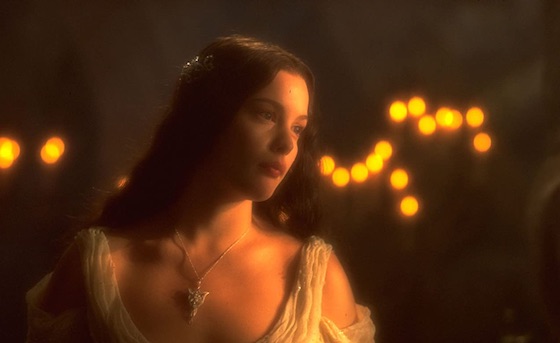
It would take a novel on its own to credit all the amazing people that brought this world to life, but I would be remiss if I didn’t briefly mention the production design of this trilogy. Renowned Tolkien artists Alan Lee and John Howe poured out an endless plethora of concept designs and in world motifs that are unrivalled. Richard Taylor was the Weta workshop head that took it from the page to screen. And finally, Ngila Dickson led the costume department and brought the rich cultures and clothing of the citizens of Middle-earth to life. Jackson’s edict to all was to render Tolkien’s world real, and in that, the production heads were resoundingly (and Oscar winningly) successful.
Every actor cast in a major role indelibly and immortally tied themselves to their respective characters to a one. There isn’t a weak performance among them. Elija Wood, with his already otherworldly giant eyes, was the perfect Frodo. Ian McKellen brings such gravitas and humanity to Gandalf (Sean Connery infamously had been sought and rejected the offer before him) one couldn’t imagine anyone else doing it. John Rys-Davies is also a comedic stand out as Gimli. But the most immersive actor of the troop—who amazingly was not initially chosen—was Viggo Mortenson. You immediately buy this guy as a ranger. His Aragorn feels of the earth, feels dangerous, tortured and weathered. Everything he does is organic and natural, and every time he’s on screen, he is mesmerizing. Stuart Townsend had originally started in the role, but both he and Jackson had quickly come to same conclusion that he wasn’t old enough for the part. Recasting to Mortenson locked the cast into the realm of perfection.
The effects ranged from—at the time—cutting edge CGI to old-school forced-perspective shots and over-sized or miniature sets (to accomplish the human to hobbit to dwarf scales). Suspension of disbelief is immediate, and seamlessly draws you into the story. There a some shots, like the shadowed first look at Gollum, that don’t stand up 20 years later, but I’m thankful to see Jackson hasn’t gone all Lucas on us and redone them completely.
Howard Shore’s score is one of the finest scores every gifted a motion picture. His themes, his ambience, his haunting melodies, transport you away from the opening scenes. Every race, every place, and every main character have their own recognizable musical cues and it’s an auditory banquet that can reach into your soul and sustain it for all time. I’m a John Williams die-hard fan, and always will be, but The Lord of the Rings scores I hold in the same esteem. They are flawless.
The Fellowship of the Ring accomplishes a seemingly insurmountable task in giving us an entry into Middle-earth that is both effective and its own identity. This is not Tolkien’s work, but is a damn good rendition of it, and, come the end credits, you are emotionally invested and eagerly primed for the next chapter.

The Lord of the Rings – FELLOWSHIP OF THE RING (extended edition)
You get an additional 30 minutes in Fellowship that includes extending Bilbo’s party scenes to enrich the introduction to the hobbits, in particular a scene that sets up Sam’s object of affection and future wife. There’s a whole subplot (from the novel actually) of the elves leaving for the undying lands, with Galadriel gifting the Fellowship magical items that are used copiously in the trilogy, like their weapons and Elven Lembas bread. There is more on Aragorn’s refusal to accept the King of Gondor mantle, and a song espousing his relationship with Arwen.
All of these scenes enrich and flesh out the characters introduced beautifully. For a theatrical release, other constraints needed to be acknowledged, and these scenes aren’t absolutely necessary. But reintroduced, they present as anything but extraneous: they are a delicious icing on an already masterfully constructed cake. In fact, given the choice, I choose the extended edition every time.


![]()
4K UHD Details:
The Lord of the Rings - The Fellowship of the Ring
Home Video Distributor: Warner Bros.
Available on Blu-ray - December 1, 2020
Screen Formats: 2.39:1
Subtitles: English SDH, French, German, Italian, Japanese, Spanish, Cantonese, Czech, Danish, Dutch, Finnish, Greek, Korean, Mandarin (Traditional), Norwegian, Polish, Swedish, Thai
Audio: English: Dolby Atmos; English: Dolby TrueHD 7.1; French: DTS-HD Master Audio 5.1; Spanish: DTS-HD Master Audio 5.1Spanish: Dolby Digital 5.1
Discs: 4K Ultra HD Blu-ray Disc; Nine-disc set
Region Encoding: Region-free playback
VIDEO:
Gone is the greenish tint from the previous blu-ray releases that marred and set apart this film from the others. To break this down, Jackson and company have scanned the original camera negatives to a native 4K resolution and up-scaled the 2K effects to 4K (with some modifications). What we do get is a blazingly natural and spectacular color palette, enhanced with HDR beautifully (DOLBY vision, HDR10 & HDR10+ compatible). There is a noticeable noise reduction, with grain all but absent, which will not go down well with purists. Jackson has countered that he wanted all six of the films he made to visually belong to the same family. I suppose it’s down to your preference which version you prefer. In spite of digital scrubbing, there is great detail to be held within every frame. Faces, effects and vistas come alive in a detail we’ve not seen before. It is at times breathtakingly beautiful, with the green hills of Hobbiton, the otherworldly Galadriel scenes and the dark caves of Moria equally showing aplomb with bright colors and dense blacks. I couldn’t detect any crush or compression issues; I did notice the odd example of edge enhancement, but nothing that sticks out like dog’s balls. It’s an almost perfect transfer and can’t get much better than this.
AUDIO:
Okay this is where I gush! This 7.1 DOLBY Atmos remix is the most awe inspiring feast for the ears I have ever experienced on home media. From Howard Shore’s masterful score to the subtlest quiet moments, this is perfection incarnate. The prior blu-ray mix was no slouch, but the new 7.1 mix doubles down on excellent LFE, crisp dialogue, and ramps the thump factor to 100. You know in cinemas, where the sound quakes through you body? Yeah, it’s like that. I didn’t even have the volume up that much, and expected the neighbor’s dog to come knocking and complain. You will want to duck when arrows fly at the screen, and hold onto the sides of your couch when shit gets real. It’s breathtaking this mix. If you wanna show off your fancy assed new speakers set up, this is the box set to use.
4K UHD Rating:
| Movie |  |
|
| Video |  |
|
| Audio |  |
|
|
Overall Blu-ray Experience
|
||
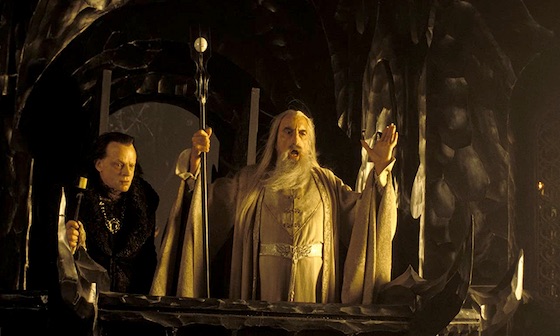 The Lord of the Rings – THE TWO TOWERS (theatrical)
The Lord of the Rings – THE TWO TOWERS (theatrical)
The fellowship has splintered. Frodo, with Sam tagging along, continues his journey to Mordor while Aragorn, Legolas and Gimli pursue the Uruk-hai who slew Boromir and kidnapped Merry and Pippin. Now separated, the two groups of the fellowship quickly find themselves in strange and challenging lands, with Frodo and Sam finding the creature Gollum, an obsessive and (at least to Sam) untrustworthy character their only hope of navigating the way. Meanwhile, Aragorn and his group find evidence that mistakenly lead them to believe Merry and Pippin have come to bad ends. While Gollum plants seeds of doubt between the hobbits, Aragorn finds his group has entered Rohan, the lands of the horse lords, a once proud ally of Gondor, now weakened by an ailing king and a splintered people. But King Theodin is not ailing at all; he has been bewitched by Grima Wormtongue—one of Sauron’s agents. Only when Aragorn’s group comes upon a mysterious white wizard in the forest, do matters begin to look less hopeless. With the wizard’s help, they stand a chance of righting some wrongs and fighting the dark lord of Mordor. And what a fight Sauron ends up bringing to them in the film’s finale. Plagued with battle and distanced from Frodo, they are forced to let him and Sam cope on their own, and the closer the two Hobbits get to Mordor, the more treacherous and dangerous Gollum and their situation becomes.
This second chapter of the adaptation was the toughest challenge to meet, and let me say here and now, my absolute favorite of the trilogy. The meat of the Two Towers novel is pretty much here, with Jackson and company excising certain scenes (some completely, some to be used in the last movie), the melding of some characters into one, the change of motivations in several characters that, in my view, improve the narrative (especially Faramir). It’s a film with no clear structure when extolling its scenes blow by blow, but they have indeed cleverly given it body, from set-up, to complication, to resolve if not resolution (as there is no end in sight, come the credits).
This is the darkest of the three films (and I want to punch myself in the throat for using this expression, because it’s often overused as a kind of go to adjective to express virtue, but this truly is a dark film!). It feels remarkably brisk, considering its many subplots and introductions to new characters, not to mention 179 minute running time. It keeps you on the edge of your seat for the bulk of proceedings. It’s quite remarkable how cleverly the complex interweaving plot unfolds and keeps you glued, and it must have been a real labor of love to get it there. I do know, being that this was the turn of the last century, that this would be the first time fans chiming in on the internet would influence just how things would play out in the final product. See, Liv Tyler’s character Arwen was written to fight alongside Aragorn at Helm’s Deep, but after an outcry from fans who had gotten wind of this intention, it was quickly excised. So why does being ‘darker’ matter in this case? Because it’s the second act and the characters you have grown to love are now hip deep in the shit. Already predicated in the first film that no one is safe, this makes for some riveting conflicts and a true sense of peril. In fact, the battle of Helm’s Deep is one of the finest examples of building dread to white knuckle levels, and paying it off remarkably, in the history of cinema.
I’ve been a Peter Jackson fan since his early works, especially the irreverent Meet the Feebles, and even back then I always thought he would amaze us in the future. Jackson really rolled up his sleeves and joined the ranks of the best in this one. Not only has he a firm handle on imagery as disparate as ethereal Elven cities, and vistas galore, to the horrors of the Uruk-hai, but he steadfastly proves he is amongst the best action directors to ever grace the silver screen. It is a jaw dropping and flawlessly presented battle in Helm’s Deep that he has gifted us. So adept was Jackson’s handling of this sequence’s pacing that one watered at the mouth to find out a year later what he would do at Minas Tirith. Top three cinematic battles I’ve even seen, hands down. (And Peter, I never doubted it for a minute!)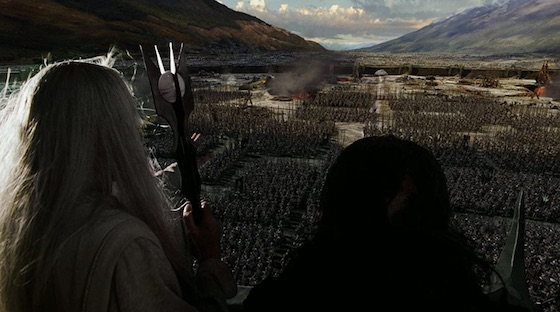
The main cast are, again (because they shot the whole trilogy at once out of sequence), consistently spectacular, but this one doubled down with a bevy of new, and equally brilliant talent. David Wenham’s Faramir—youngest brother of Boromir—is given a remarkable, if brief, role to play. As opposed to the book, he is given an adversarial role towards Frodo that just ratchets the tension off the scale. But also, he is given scenes of great humanity, and I mean humanity not as a compliment but to express that he is all shades of the spectrum: potential ally but also potential threat and everything in between. He’s remarkable. Brad Dourif never lets me down and his Grima Wormtongue is pitch-perfect and you wanna punch him in the face from his first line. Bernard Hill, who must have found a way off the Titanic, also elevates what could have been a standard King role with a nuanced and interesting turn as Theodin. But it is what lies underneath the millions of pixels Weta used to render Gollum real that introduced the world to a new way of performance and resoundingly gifted actor. Andy Serkis is well-known today, but back then—even by the actors—he was a guy in an embarrassing white leotard, who was to be painted over. What Weta did to make Gollum was game changing (but we’ll get to that in the effects portion of this review), but without Serkis’s brilliant performance leading it, they would have accomplished squat. I would liken what Serkis did, and has continued to do, to handing a pencil to a true artist. In his hands, we got a masterpiece; in someone who treated it as less, just a voice role, it wouldn’t have worked. He deserved an Oscar nomination for his rendition of Gollum, the sad, pitiable, bi-polar, dangerous creature forever burdened with an obsession for the ring. He also deserved one for The Planet of the Apes movies; they’re absolutely groundbreaking performances both.
Effects: one wouldn’t think that a movie that came out twelve months after the first one could really be that much better than it, but one would be incorrect. The scale of the battles and the requirements of Gollum had Weta and all the artisans involved really upping their game. Two Towers benefits perhaps a little more than Return of the King has (seen through 2020 eyes at least) because it has a lot of night set scenes to shield from near 20 years old effects. But there is no hiding from the requirements of Gollum to emote and connect and convince. They also did a pretty convincing job of making sentient trees move and emote. The suspension of disbelief is immediate and leaves the Lucasfilm Jar Jar work from only three years earlier in the dust.
The practical effects guys also wowed with the Rohan village and main hall, and Alan Lee’s Helm’s Deep (his first designs for the films) was rendered amazingly in ¼ scale (not that you can tell) for the breathtaking finale.
Howard Shore also ups the ante with his equally breathtaking, intimidating score. In a weird turn of events, it’s the only score of the three not to win an Oscar.
The Two Towers is the best second chapter in a trilogy since The Empire Strikes. The sheer magnitude of its accomplishments is hard to summarize in a review, but sufficed to say it is magnetic in its scale, its ability to evoke emotion and its every moment. It’s an expertly delivered masterpiece that, while hardly faithful to the source, takes the source seriously and delivers an adaptation for the ages.

The Lord of the Rings – THE TWO TOWERS (extended edition)
In this one, you get 44 minutes of extra and/or extended scenes that massively expand the conniving and plotting of Saruman, and its effects on nearby villagers and the Ents. Merry and Pippen’s encounter with Treebeard is way more fleshed out and organic. More details about Aragorn are show (like he looks great for an 80 something year-old, don’t he?) You also see a lot more about Faramir’s bond with his deceased brother and the pain he endures due to his prick of a father. Less interesting is the extension of Theodin’s son’s funeral, which doesn’t add much as you’re never really given any time to connect with the dead man. This one has welcome additions but is the weakest of the extended editions to me.

![]()
4K UHD Details:
The Lord of the Rings - The Two Towers
VIDEO:
Being the ‘darkest’ film of the bunch, black levels are what matter here and they don’t disappoint. Shadow details are remarkable and nuanced. The contrast levels, thanks to the HDR, are so, so, so good. The depth of the night scenes range from the deepest impenetrable blacks to the rich HDR embellished highlights on the rainy battle of Helm’s Deep. The extended Balrog sequence is a delightful example of the color uptick. Digital noise reduction is, just as Fellowship, ever present, and will be a bone of contention for some. But the fine detail hasn’t all been scrubbed away. Gollum is front and centre in this one, unlike the previous, and for the most part renders as real. You really can’t ask for more than that.
AUDIO:
Expansive, immersive, perfect, perfect, PERFECT! Being that conflict is a bigger part of this film than the previous, the battle scenes are akin to an earthquake, such is their power and efficacy. The atmospherics, like the rain at Helm’s Deep, pound down on top of you as the arrows whisk past your ears and the thunder of the Uruk-kai soldiers’ approach rumble beneath your feet. Complete auditory immersion. Absolute perfection.
Blu-ray Rating:
| Movie |  |
|
| Video |  |
|
| Audio |  |
|
|
Overall Blu-ray Experience
|
||
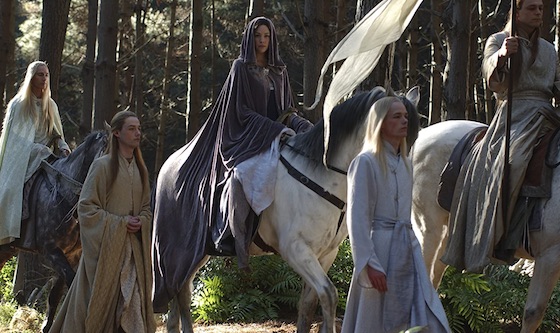 The Lord of the Rings – THE RETURN OF THE KING (theatrical)
The Lord of the Rings – THE RETURN OF THE KING (theatrical)
In this final chapter, Sauron’s forces are massing to swarm Middle-earth and destroy all who would stand in their way. Frodo and Sam inch closer, unwittingly (at least in Frodo’s case) toward their doom at at the hands of the treacherous Gollum’s scheming. Meanwhile, the rest of the surviving fellowship are reuniting and, not knowing how exactly, trying to draw together any and all help they can to face off against the armies of Mordor at an equally lost and scattered Minas Tirith. But can Aragorn accept his destiny and unite long standing rifts before it’s too late?
This film cleverly opens on Gollum, when he was a simple hobbit named Smeagol. It quickly establishes the hold the ring can have over one of them as Smeagol resorts to murder to obtain it. This briskly foreshadows warning as to Frodo’s deteriorating state and perfectly sets the risks from the onset. Also brilliantly and patiently set-up in The Two Towers and played out in Return of the King is Gollum’s many manipulations to cause a rift between Frodo and Sam. On the bones of story responsibility for the remaining fellowship members, all they’re pretty much required to do is converge and fight. But Jackson and company adapt Tolkien’s work to complicate that inevitability in a much more truncated yet still effective way. Rohan is not on board to begin with. Aragorn is still reluctant to accept his destiny. And Denethor’s (a brilliant John Noble) stubborn assholery and ineptitude is front and center for the many complications these characters have to face to get there. Patiently, methodically, the writers front end scenes held back from The Two Towers novel to great effect in this last film, like the Shelob sequence. Jackson’s horror penchant and skill for dread really come to the fore in these giant spider scenes to bone chilling effect. I have my small (tiny really) issues with this film, like an over long, unending ending, and the brevity of the army of dead to wrap the battle up at the end, however this is a jammed packed and tension-filled story that continues to ratchet the tension until the inevitable finale, and what a feast that is.
The dramatic moments of this last act of the story require the most out of its cast, and they, to a one, rise to the occasion superbly. While Return of the King would go on to match Gone with the Wind in Oscar wins (all 11 it was nominated for), amazingly none of the cast were awarded or even nominated for a statue for this film. Ian McKellen’s performance especially deserved the nod, having been nominated for Fellowship previously.
Weta amazed with their work 17 years ago, and still can drop the jaw now, for the sheer scale and artistry on display in this film’s every frame. From the orc masses, to the Witch King, to the Mumakils, to the stampede of the Rohirin, to the blazing white city of Minas Tirith, to the depths of Mordor and the fiery Mount Doom, nearly every shot suspends your disbelief and enthralls… With a few teeny tiny exceptions: There are a couple of digital Legolas scenes that even back in the day looked like Playstation 2 game moments. But Weta are, without any shadow of a doubt, worthy of the Oscar they received. 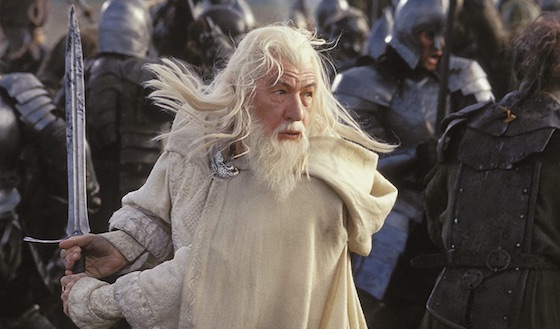
Howard Shore expands on his already well established themes, enriching them to the grandest (and Oscar winning) levels. It’s truly a feast for the ears, enthralling and moving to the last minute. As an accompanying cherry on top, Annie Lennox came in and sung the song Into The West for the credits. Absolutely breathtaking work all round.
Sound designs also ratchets up in this one, rising to meet the challenges and ambiences of dark caves, volcanic terrains and furious battles. Its’ effect cannot be understated (I will go into it a bit in the AUDIO section of this review.)
The Return of the King satisfied in so many ways. It is a brilliant movie, jammed to its gills with virtues and amazing accomplishments. It isn’t my favorite, however. That, for me, goes wholeheartedly to The Two Towers. I think this last chapter in The Lord of Rings was given all the collective honors of the first two as well. It is by no means a lesser film, and I love the resolution (despite the copious endings), it’s just not my choice for the best of the three. It is without doubt a worthy end to a brilliant adaptation and a trilogy for the history books.

The Lord of the Rings – THE RETURN OF THE KING (extended edition)
In this one they pull out all the stops! The theatrical release already ran at an immense 3 hours and 20 minutes. The extended edition of this one runs 4 hours and 11 minutes! That’s an extra 51 minutes! What’s in the nearly extra hour? You get extended moments in the major battles of course, but the real gems are extended scenes, or completely excised scenes that enrich the characters. You get more on Aragorn’s success in conscripting the army of the dead, his success in resisting the power of the palantir and the taking of the black ships. Saruman, who in the theatrical resolution (much to the annoyance of Christopher Lee), is given an ending, gruesome and satisfying. The burgeoning romance of Faramir and Eowyn is shown. There is a spectacular battle between Gandalf and the Witch King. And then there is the Mouth of Sauron (played by Aussie icon Bruce Spence) whose smile makes Linda Blair’s Exorcist scenes look worth of a toothpaste commercial. Aragorn decapitating him was very satisfying to me indeed. Karl Urban’s Eomer also receives a grand and moving scene upon discovering his sister—seemingly fallen—on the battlefield. All this extra stuff just enriches the characters and makes certain truncated elements from the theatrical edition all the deeper. This one is the best of the extended editions (ironically, because of my feelings about the endings!) adding far more return for the time spent.


![]()
4K UHD Details:
The Lord of the Rings - The Return of the King
VIDEO:
From the Smeagol prologue at the start, Return of the King comes out swinging. It’s so rich with HDR and detailed that you practical feel like you can reach out and touch the water or the grass. So, too, the many sets leap off the screen, from the caves of the dead to the spectacular alleys and halls of Minas Tirith. Contrast is off the chart good, from the vistas to the faces of all the characters. Again, noise reduction is present. The near 20 year-old effects were at their height in this film, and appear to have been slightly improved in these new transfers. Not to reinvent the wheel, but to blend better at this higher resolution. While some effects still don’t ring true, these are rare occurrences and this film is a sight to behold. This is the most demanding of the three films, in terms of visual tasks, and rises to that challenge easily. Best it’s ever looked.
AUDIO:
As the most action heavy of the series, prepare for your windows to rattle. How many ways can one say that this DOLBY Atmos 7.1 mix is perfection? From the earth quaking battles to the sinister and sometimes subtle Shelob scenes, the mix flawlessly immerses and thrills you, keeping you planted on the edge of your seat. This is reference quality stuff, people.
Blu-ray Rating:
| Movie |  |
|
| Video |  |
|
| Audio |  |
|
|
Overall Blu-ray Experience
|
||
